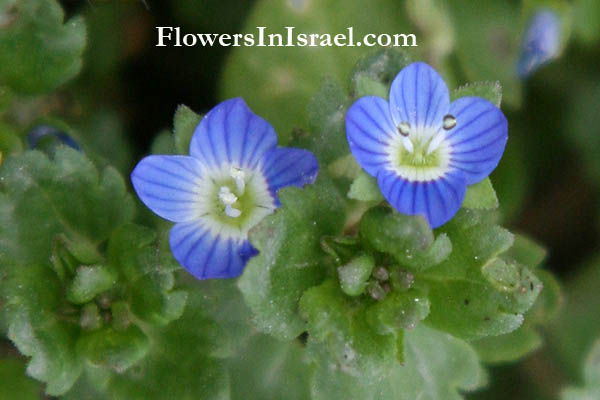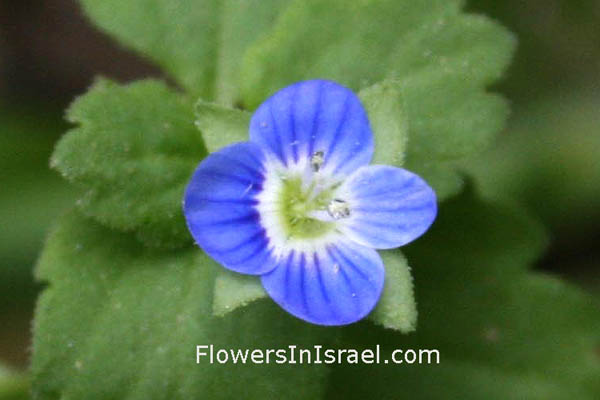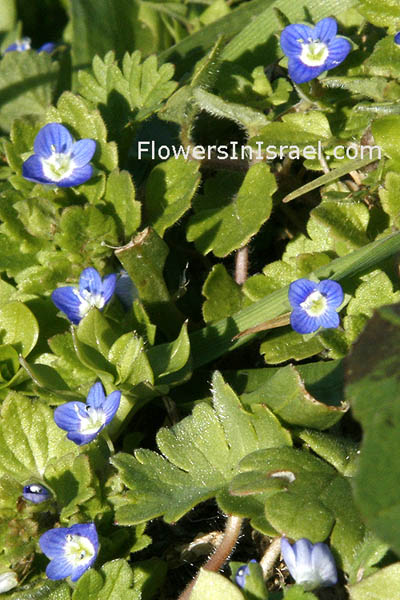Hebrew: ורוניקה מבריקה, Arabic: لبخ أزرق
| Scientific name: | Veronica polita Fr. | |
| Scientific name: | Veronica didyma Ten. p.p., Pocilla polita (Fr.) Fourr. | |
| Common name: | Grey field speedwell | |
| Hebrew name: | ורוניקה מבריקה | |
| Arabic name: | لبخ أزرق | |
| Family: | Scrophulariaceae, לועניתיים |

Location: Betah Mountain, Western Galilee |
| Life form: | Annual | |
| Stems: | 10-30 cm high, sparsely pubescent | |
| Leaves: | Alternate, opposita | |
| Flowers: | Blue, small, solitary, on axillary pedicels as long as the leaf | |
| Fruits / pods: | Capsule reniform; seeds boat-shaped, elliptic | |
| Flowering Period: | January, February, March, April | |
| Habitat: | Batha, Phrygana, Disturbed habitats | |
| Distribution: | The Mediterranean Woodlands and Shrublands, Semi-steppe shrublands, Shrub-steppes | |
| Chorotype: | Oro Mediterranean | |
| Summer shedding: | Ephemeral |

Derivation of the botanical name: Veronica, named for the woman who took her veil, or a linen cloth, and wiped the sweat from the face of Jesus as he was bearing his cross to Calvary, and so named because the markings on some species supposedly resemble those on her sacred handkerchief. polita, polio, to smoothen, polish; polished. didyma, Greek, didymos, διδυμοϛ, double; two fruited. Pocilla, small-cup, diminutive of poculum, a drinking-cup used in ancient Rome. The Hebrew name: ורוניקה, Veronica , transliteration from the scientific name.

|